Last Updated:July 15, 2024
Sunroom Roof Types
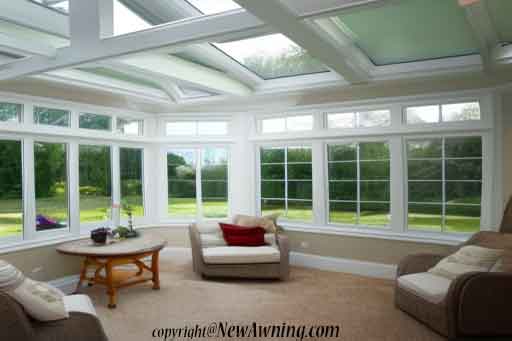
A sunroom which is sometimes marketed as an “all-season room” or a “four-season room” is a wonderful addition to any home that will provide more living space at a fraction of the cost of doing a full room build-out. It provides a space to entertain guests, relax, or just enjoy the natural light and warmth of the sun. When designing your sunroom, one of the most important decisions you’ll need to make is the type of roof you want to install. There are several options to choose from, each with its own unique set of benefits and drawbacks. In this blog post, we’ll take a closer look at some of the different types of roofs available for a sunroom, as well as their pros and cons. This is an exhaustive list whether you go with a kit or a custom built sunroom.
Sunroom Roof Options
In this blog post, we’ll list each of the most popular roofing options, and we’ll share our thoughts on the pros and cons of each. These are simply our general opinions on the topic. If you are considering building an extension for your home, we strongly recommend that you speak with a licensed contractor in your own state or local area.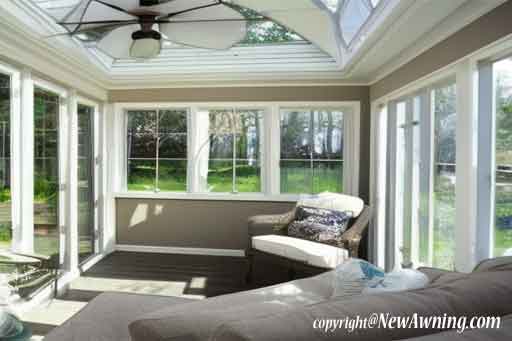
Glass Roof Sunroom
A glass roof is popular because it allows the most natural light to enter the space. This type of roof is made up of panels of tempered glass that are held in place by a frame. The panels are typically arranged in a grid pattern and can be opened or closed to adjust the amount of light and ventilation in the sunroom.Pros:
- Allows the most natural light to enter the sunroom
- Can be opened or closed to control ventilation and temperature
- Durable and long-lasting
Cons:
- Working with glass a roof will require specialized tools and installers
- Can become hot and uncomfortable during the summer months if not properly ventilated
- May require more maintenance to keep clean
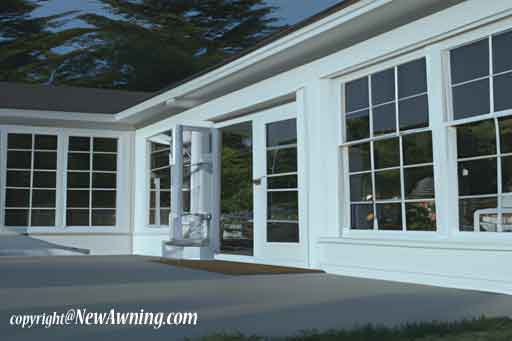
Polycarbonate Roof
Polycarbonate roofing panels are made from a type of plastic that is strong, lightweight, and resistant to UV radiation. They are often used as an alternative to glass in sunroom roofs because they are more affordable and easier to install. Polycarbonate panels can be clear or tinted, and they can be arranged in a variety of patterns to suit the design of your sunroom.Pros:
- More affordable than glass roofing
- Lightweight and easy to install
- UV resistant
- Can be tinted to reduce heat and glare
Cons:
- May not be as durable as glass or other materials
- Can become discolored or cloudy over time
- May not allow as much natural light to enter the sunroom
Fabric Roof
A fabric roof is made up of a stretchy material that is attached to a frame. The fabric can be rolled up or down to control the amount of light and ventilation in the sunroom. Fabric roofs are often made from materials like PVC or acrylic, which are durable and resistant to weathering. The are especially good for screen pool enclosures and using bright solid colors on the fabric is a great way to add a design element.Pros:
- Can be rolled up or down to control light and ventilation
- Easy to install for an experienced DIY’er
- Affordable
Cons:
- May not be as durable as other materials
- May need to be replaced every few years
- May not allow as much natural light to enter the sunroom
- May require more maintenance to keep clean
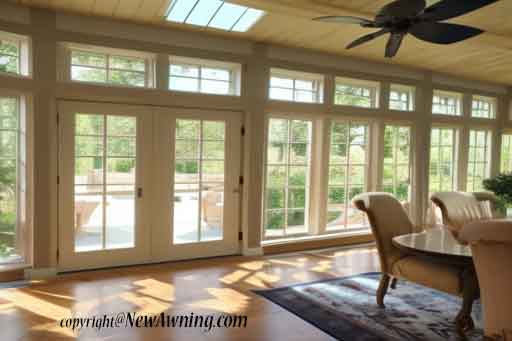
Aluminum Roof
An aluminum roof is made up of panels of aluminum that are held in place by a frame. These panels are typically finished with a coating that protects against weathering and UV radiation. Aluminum roofs are a popular choice for sunrooms because they are durable, low maintenance, and energy efficient.Pros:
- Durable and low maintenance
- Energy efficient
- Resistant to weathering and UV radiation
Cons:
- Are on the more expensive to install than other types of roofs
- May not allow as much natural light to enter the sunroom
- May not be as aesthetically pleasing as other materials
Cedar Shake Roof
A cedar shake roof is made up of thin, shingle-like pieces of cedar wood that are overlapped to create a roofing surface. A Cedar shake roof are popular for sunrooms because they provide a natural look and feel, and they are durable and resistant to weathering. We fell in love with this style after seeing all the homes designed by Keith and Evan on the HGTV show Bargain Block.Pros:
- Natural look and feel
- Durable and resistant to weathering
- Provides insulation and soundproofing
Cons:
- Are much more expensive for material than other choices
- May require more maintenance to keep it clean and in good condition
- May not be as energy efficient as other materials
Flat Roof for Home
A flat roof is exactly what it sounds like – a flat roof, rather than pitched. Flat roofs are a common choice for sunrooms because they are easy to install and maintain. Flat roofs can be made from a variety of materials, including rubber, PVC, and asphalt.Pros:
- Easy to install and maintain
- Can be made from a variety of materials
- Provides a modern look
Cons:
- May not allow for as much natural light to enter the sunroom
- May not be as durable as pitched roofs
- May require more frequent repairs or maintenance
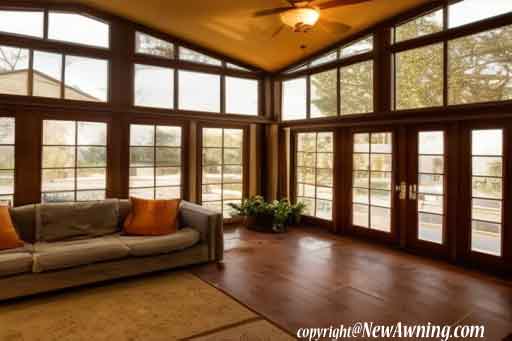
Studio Pitched Roof
A pitched roof is a roof that slopes downward at an angle, with two sides that meet at a peak. Pitched roofs are a popular choice for sunrooms because they allow for more natural light to enter the space, and they provide better insulation and ventilation. Pitched roofs can be made from a variety of materials, including shingles, tiles, or metal.Pros:
- Allows for more natural light to enter the sunroom
- Provides better insulation and ventilation
- Can be made from a variety of materials
Cons:
- Middle of the road price option to install than flat roofs
- May require more maintenance to keep it clean and in good condition
Retractable Sunroom Roof
Retractable roofs can be made from a variety of materials, including fabric, glass, or metal. They can be opened manually or with the use of a motorized system.Also, I’ve been doing window coverings, blinds, awnings, and other shade structures for 11 years, and I’ve never had a homeowner choose a retractable roof. This is something you may see in a home show or on a television program, but the vast majority of people will never choose this option for their sunrooms. The extra work and maintenance simply aren’t worth the cost when you consider that you could increase the size of the sunroom, and the retractable roof will also impact the flooring options and furnishings.
Pros:
- Allows for adjustable light and ventilation
- Can be used in a variety of weather conditions
- Can add value to your home
Cons:
- Incredibly more expensive than a stationary roof
- May require more maintenance to keep it clean and in good working order
- May not be as energy efficient as other materials
Green Roof
A green roof’s a type of roof that is covered in plants and vegetation. Green roofs can be installed on top of a traditional roof or as a standalone structure. They provide a number of benefits, including insulation, reduced energy costs, and improved air quality.Pros:
- Provides insulation and energy savings
- Improves air quality
- Can add value to your home
Cons:
- An acquired taste as this may turn off potential buyers when you try to sell the home
- May require more maintenance to keep plants healthy and thriving
- May not be suitable for all climates or regions
Skylight Roof
A skylight roof is a type of roof that includes one or more openings that allow natural light to enter the sunroom. Skylights can be installed in a variety of shapes and sizes, and they can be opened or closed to control the amount of light and ventilation in the space.Pros:
- Allows for natural light to enter the sunroom
- Can be opened or closed to control ventilation and temperature
- Can add value to your home
Cons:
- Has a chance to leak or require replacement more often than a traditional roof
- Can be less energy efficient if not insulated well
- May require more maintenance to keep clean
- May not be suitable for all climates or regions
